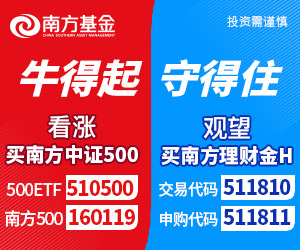If Approved, Maribavir Will Be the First and Only Treatment Indicated for Post-Transplant Cytomegalovirus (CMV) Infection in Those That Are Refractory, With or Without Resistance (R/R)
NDA based on Phase 3 Trial of Maribavir Which Met Its Primary Endpoint of Superiority Compared to Conventional Antiviral Therapies in Transplant Recipients with R/R CMV Infection1
The U.S. Food & Drug Administration Granted Maribavir Breakthrough Therapy Designation as a Treatment for CMV Infection in Transplant Patients Resistant or Refractory to Prior Therapy
Maribavir is Takeda’s Fourth New Molecular Entity Accepted for Regulatory Review in Six Months
OSAKA, Japan -- (BUSINESS WIRE) --
Takeda Pharmaceutical Company Limited Takeda Pharmaceutical Company Limited (TSE:4502/NYSE:TAK) (“Takeda”) today announced that the U.S. Food & Drug Administration (FDA) has accepted a New Drug Application (NDA) for maribavir for the treatment of CMV infection in those that are refractory with or without resistance (R/R), in solid organ transplant (SOT) or hematopoietic cell transplant (HCT) recipients.
This is an inflection year for Takeda’s pipeline with up to six regulatory submissions and four potential approvals anticipated by the end of fiscal year 2021. The maribavir NDA acceptance is Takeda’s fourth new molecular entity accepted for regulatory review in six months, following the FDA submissions of TAK-721 for the treatment of eosinophilic esophagitis, mobocertinib for the treatment of EGFR Exon20 insertion mutation positive metastatic non-small cell lung cancer, and the European Medicines Agency submission of the Company’s dengue vaccine candidate (TAK-003), which is being investigated for the prevention of dengue due to any dengue virus serotype in individuals ages four to 60.
“CMV is one of the most common viral infections experienced by transplant recipients, and current antiviral treatment options are limited, and physicians have to engage in a careful balance of viral clearance and side effect management that can impact patient care and transplant outcomes,” said Obi Umeh, MD, Vice President and Maribavir Global Program Leader, Takeda. “If approved, maribavir has the potential to change the treatment landscape for post-transplant CMV, and the acceptance of this regulatory application is an important milestone on maribavir’s path forward.”
The application is based on the pivotal Phase 3 TAK-620-303 (SOLSTICE) trial, results of which were presented at the 2021 Transplantation & Cellular Therapy (TCT) Meetings Digital Experience, with subgroup analysis presented during the Presidential Symposium 47th Annual Meeting of the European Society for Blood and Marrow Transplantation (EBMT).
“CMV infection puts transplant recipients at an increased risk of disease, such as pneumonia or gastrointestinal disease. It can also increase the risk of graft rejection, opportunistic co-infections, and in some cases, even death,” said Michael Boeckh, M.D., Ph.D., Head, Infectious Disease Sciences Program at the Vaccine and Infectious Disease Division, Fred Hutch “The results of the SOLSTICE trial are promising and show that maribavir may help with post-transplant CMV viremia, including cases of drug-resistance for which there is an unmet need.”
Maribavir has been granted Orphan Drug Designation by the FDA for treatment of clinically significant CMV viremia and disease in at-risk patients. The FDA has also granted maribavir Breakthrough Therapy Designation as a treatment for CMV infection and disease in transplant patients resistant or refractory to prior therapy. These designations do not guarantee that the FDA will approve maribavir for the treatment of CMV infections in transplant patients, and the timing of any such approval is uncertain.
About CMV
CMV is a beta herpesvirus that commonly infects humans; serologic evidence of prior infection can be found in 40%-100% of various adult populations.2 CMV typically resides latent and asymptomatic in the body but may reactivate during periods of immunosuppression. Serious disease may occur in individuals with compromised immune systems, which includes patients who receive immunosuppressants associated with various types of transplants including hematopoietic cell transplant (HCT) or solid organ transplant (SOT).3,4 Out of the estimated 200,000 adult transplants per year, CMV is one of the most common viral infections experienced by transplant recipients, with an estimated incidence rate between 16-56% in SOT recipients and 30-70% in HCT recipients.4–9
In transplant recipients, reactivation of CMV can lead to serious consequences including loss of the transplanted organ and, in extreme cases, can be fatal.10,11 Existing therapies to treat posttransplant CMV infections may demonstrate serious side effects that require dose adjustments or may fail to adequately suppress viral replication.12–14 Additionally, existing therapies may require or prolong hospitalization due to administration.12,13
About Maribavir
Maribavir, an orally bioavailable anti-CMV compound, is the only antiviral agent presently n Phase 3 development for the treatment of post-transplant patients with CMV in SOT or HCT. Maribavir is an investigational treatment that has not been approved for use by the U.S. Food and Drug Administration (FDA), European Medicines Agency (EMA) or any other regulatory authorities. Maribavir is the only CMV antiviral drug that targets and inhibits the UL97 protein kinase and its natural substrates.1,15–17
Maribavir has been granted Orphan Drug Designation by the European Commission as a treatment of CMV disease in patients with impaired cell mediated immunity and by the FDA for treatment of clinically significant CMV viremia and disease in at-risk patients. Orphan status is granted to certain investigational medicines intended for the treatment or prevention of a rare, life-threatening disease. The FDA has also granted maribavir Breakthrough Therapy Designation as a treatment for CMV infection and disease in transplant patients resistant or refractory to prior therapy. Breakthrough Therapy Designation expedites the development and review of investigational treatments for serious conditions with preliminary clinical evidence indicating that the drug may demonstrate substantial improvement over available therapy. These designations do not guarantee that the EMA or FDA will approve maribavir for the treatment of CMV infections in transplant patients, and the timing of any such approval is uncertain.
About Takeda’s SOLSTICE Trial
The TAK-620-303 (SOLSTICE) trial (NCT02931539) is a multicenter, randomized, open-label, active-controlled trial comparing treatment with either maribavir or investigator assigned treatment, IAT, (conventional antiviral therapy) in hematopoietic cell transplant and solid organ transplant recipients with CMV infection refractory, with or without resistance, to one or a combination of the conventional antiviral therapies: ganciclovir, valganciclovir, foscarnet or cidofovir. Patients underwent a 2-week screening period, followed by randomization 2:1 to maribavir (n=235) (400 mg) or IAT (n=117) for an 8-week treatment period, plus 12 weeks of follow-up.
The trial’s primary endpoint was defined as the proportion of patients who achieved confirmed CMV viremia clearance (plasma CMV DNA <137 IU/mL in two consecutive tests ≥5 days apart at central laboratory) compared to IAT at the end of Study Week 8. The key secondary endpoint was defined as achievement of CMV viremia clearance and symptom control at end of Study Week 8, maintained through Study Week 16.
About Takeda Pharmaceutical Company Limited
Takeda Pharmaceutical Company Limited (TSE: 4502/NYSE: TAK) is a global, values-based, R&D-driven biopharmaceutical leader headquartered in Japan, committed to discover and deliver life-transforming treatments, guided by our commitment to patients, our people and the planet. Takeda focuses its R&D efforts on four therapeutic areas: Oncology, Rare Genetics and Hematology, Neuroscience, and Gastroenterology (GI). We also make targeted R&D investments in Plasma-Derived Therapies and Vaccines. We are focusing on developing highly innovative medicines that contribute to making a difference in people’s lives by advancing the frontier of new treatment options and leveraging our enhanced collaborative R&D engine and capabilities to create a robust, modality-diverse pipeline. Our employees are committed to improving quality of life for patients and to working with our partners in health care in approximately 80 countries. For more information, visit https://www.takeda.com.
Important Notice
For the purposes of this notice, “press release” means this document, any oral presentation, any question and answer session and any written or oral material discussed or distributed by Takeda Pharmaceutical Company Limited (“Takeda”) regarding this release. This press release (including any oral briefing and any question-and-answer in connection with it) is not intended to, and does not constitute, represent or form part of any offer, invitation or solicitation of any offer to purchase, otherwise acquire, subscribe for, exchange, sell or otherwise dispose of, any securities or the solicitation of any vote or approval in any jurisdiction. No shares or other securities are being offered to the public by means of this press release. No offering of securities shall be made in the United States except pursuant to registration under the U.S. Securities Act of 1933, as amended, or an exemption therefrom. This press release is being given (together with any further information which may be provided to the recipient) on the condition that it is for use by the recipient for information purposes only (and not for the evaluation of any investment, acquisition, disposal or any other transaction). Any failure to comply with these restrictions may constitute a violation of applicable securities laws.
The companies in which Takeda directly and indirectly owns investments are separate entities. In this press release, “Takeda” is sometimes used for convenience where references are made to Takeda and its subsidiaries in general. Likewise, the words “we”, “us” and “our” are also used to refer to subsidiaries in general or to those who work for them. These expressions are also used where no useful purpose is served by identifying the particular company or companies.
Forward-Looking Statements
This press release and any materials distributed in connection with this press release may contain forward-looking statements, beliefs or opinions regarding Takeda’s future business, future position and results of operations, including estimates, forecasts, targets and plans for Takeda. Without limitation, forward-looking statements often include words such as “targets”, “plans”, “believes”, “hopes”, “continues”, “expects”, “aims”, “intends”, “ensures”, “will”, “may”, “should”, “would”, “could” “anticipates”, “estimates”, “projects” or similar expressions or the negative thereof. These forward-looking statements are based on assumptions about many important factors, including the following, which could cause actual results to differ materially from those expressed or implied by the forward-looking statements: the economic circumstances surrounding Takeda’s global business, including general economic conditions in Japan and the United States; competitive pressures and developments; changes to applicable laws and regulations, including global health care reforms; challenges inherent in new product development, including uncertainty of clinical success and decisions of regulatory authorities and the timing thereof; uncertainty of commercial success for new and existing products; manufacturing difficulties or delays; fluctuations in interest and currency exchange rates; claims or concerns regarding the safety or efficacy of marketed products or product candidates; the impact of health crises, like the novel coronavirus pandemic, on Takeda and its customers and suppliers, including foreign governments in countries in which Takeda operates, or on other facets of its business; the timing and impact of post-merger integration efforts with acquired companies; the ability to divest assets that are not core to Takeda’s operations and the timing of any such divestment(s); and other factors identified in Takeda’s most recent Annual Report on Form 20-F and Takeda’s other reports filed with the U.S. Securities and Exchange Commission, available on Takeda’s website at: https://www.takeda.com/investors/sec-filings/ or at www.sec.gov. Takeda does not undertake to update any of the forward-looking statements contained in this press release or any other forward-looking statements it may make, except as required by law or stock exchange rule. Past performance is not an indicator of future results and the results or statements of Takeda in this press release may not be indicative of, and are not an estimate, forecast, guarantee or projection of Takeda’s future results.
*The difference in proportion of responders between treatment groups was obtained using Cochran-Mantel-Haenszel (CMH) weighted average across all strata and tested using stratum-adjusted CMH method, with transplant type and baseline plasma CMV DNA concentration as two stratification factors
† Refractory defined as documented failure to achieve >1 log10 decrease in CMV DNA level in whole blood or plasma after a 14 day or longer treatment period with IV ganciclovir/oral valganciclovir, IV foscarnet, or IV cidofovir
‡ Resistant defined as refractory CMV and documentation of >1 CMV genetic mutations associated with resistance to ganciclovir, valganciclovir, foscarnet, and/or cidofovir
|
References |
|
|
1.
|
Marty F. A Phase 3 Randomized Study of Maribavir (MBV) Versus Investigator-Assigned Antiviral Therapy (IAT) for the Treatment (Tx) of Refractory/Resistant (R/R) Cytomegalovirus (CMV) Infection in Hematopoietic Cell Transplant (HCT) or Solid Organ Transplant (SOT) Recipients. In: The 2021 TCT Meetings Digital Experience. ; 2021. |
|
2. |
Krech U. Complement-fixing antibodies against cytomegalovirus in different parts of the world. Bull WHO. 1973;49:103-106. |
|
3. |
de la Hoz R. Diagnosis and treatment approaches to CMV infections in adult patients. Journal of Clinical Virology. 2002;25:S1-S12. |
|
4. |
Azevedo L, Pierrotti L, Abdala E, et al. Cytomegalovirus infection in transplant recipients. Clinics. 2015;70(7):515-523. doi:10.6061/clinics/2015(07)09 |
|
5. |
World Health Organization. International Report on Organ Donation and Transplantation Activities- Executive Summary 2018.; 2020. Accessed December 2, 2020. http://www.transplant-observatory.org/wp-content/uploads/2020/10/glorep2018-2.pdf |
|
6. |
World Health Organization. Haematopoietic Stem Cell Transplantation HSCtx. Accessed December 2, 2020. https://www.who.int/transplantation/hsctx/en/ |
|
7. |
Razonable RR, Eid AJ. A Viral infections in transplant recipients. MINERVA MEDICA. 2009;100(6):23. |
|
8. |
Styczynski J. Who Is the Patient at Risk of CMV Recurrence: A Review of the Current Scientific Evidence with a Focus on Hematopoietic Cell Transplantation. Infect Dis Ther. 2018;7:1-16. |
|
9. |
Cho S-Y, Lee D-G, Kim H-J. Cytomegalovirus Infections after Hematopoietic Stem Cell Transplantation: Current Status and Future Immunotherapy. Int J Mol Sci. 2019;20(2666):1-17. |
|
10. |
Fishman JA. Infection in Organ Transplantation. American Journal of Transplantation. 2017;17:856-879. |
|
11. |
Kenyon M, Babic A, eds. The European Blood and Marrow Transplantation Textbook for Nurses. Springer International Publishing; 2018. doi:10.1007/978-3-319-50026-3 |
|
12. |
Martín-Gandul C, Pérez-Romero P, González-Roncero FM, et al. Clinical impact of neutropenia related with the preemptive therapy of CMV infection in solid organ transplant recipients. Journal of Infection. 2014;69(5):500-506. doi:10.1016/j.jinf.2014.07.001 |
|
13. |
Chemaly RF, Chou S, Einsele H, et al. Definitions of Resistant and Refractory Cytomegalovirus Infection and Disease in Transplant Recipients for Use in Clinical Trials. Clinical Infectious Diseases. 2019;68(8):1420-1426. doi:10.1093/cid/ciy696 |
|
14. |
Beyer K. Outpatient Foscarnet Administration Incorporating Home Infusions Is Feasible Greatly Enhancing the Care of Hematopoietic Stem Cell Transplant Recipients. Biol Blood Marrow Transplant. 2017;23:S18-S391. |
|
15. |
Hamirally S, Kamil JP, Ndassa-Colday YM, et al. Viral Mimicry of Cdc2/Cyclin-Dependent Kinase 1 Mediates Disruption of Nuclear Lamina during Human Cytomegalovirus Nuclear Egress. Nelson JA, ed. PLoS Pathog. 2009;5(1):e1000275. doi:10.1371/journal.ppat.1000275 |
|
16. |
Krosky PM, Baek M-C, Coen DM. The Human Cytomegalovirus UL97 Protein Kinase, an Antiviral Drug Target, Is Required at the Stage of Nuclear Egress. JVI. 2003;77(2):905-914. doi:10.1128/JVI.77.2.905-914.2003 |
|
17. |
Prichard MN. Function of human cytomegalovirus UL97 kinase in viral infection and its inhibition by maribavir: Human cytomegalovirus UL97 kinase. Rev Med Virol. 2009;19(4):215-229. doi:10.1002/rmv.615 |
View source version on businesswire.com: https://www.businesswire.com/news/home/20210521005134/en/
CONTACT:
Media:
Japanese Media
Ryoko Matsumoto
ryoko.matsumoto@takeda.com
+81 (0) 3-3278-3414
Media Outside Japan
Linda Calandra
linda.calandra1@takeda.com
+1 617 301 2092
责任编辑: admin
珠海都市网所有文字、图片、视频、音频等资料均来自互联网,不代表本站赞同其观点,本站亦不为其版权负责。相关作品的原创性、文中陈述文字以及内容数据庞杂本站无法一一核实,如果您发现本网站上有侵犯您的合法权益的内容,请联系我们,本网站将立即予以删除!

焦点新闻
热图要闻
热门排行
- PLDA宣布推出Robust Verification Toolset,以提
- Ludovic Blanquet Joins smartTrade as Chief Pro
- Wolters Kluwer FRR Launches OneSumX for Risk M
- 香港旅遊發展局訂立統一衞生防疫指引 向旅客傳遞
- Nanboya香港辦事處遷至佐敦,首個海外採購辦公室
- GSMA Announces Date Changes for its MWC21 Seri
- 罗克韦尔自动化收购网络安全公司
- Standard Digital Group Is Now Accepting Online
- Nanboya香港辦事處遷至佐敦,首個海外採購辦公室
- Standard Digital Group Is Now Accepting Online







